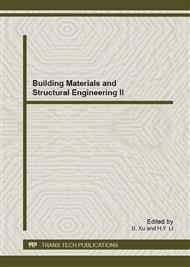p.146
p.150
p.155
p.159
p.164
p.170
p.179
p.183
p.189
Steel and Steel-Concrete Composite Columns of HEA-Cross-Sections with Member Imperfections, Subjected to Buckling Compression
Abstract:
The paper deals with the problems of the load-carrying capacity of steel and steel-concrete composite members composed of high-strength materials, subjected to compression. The attention is mainly paid to the buckling resistance in the connection with member imperfections, which are usually covered by the equivalent initial geometrical imperfection expressed as the maximal initial member curving in the mid-length of the buckled member subjected to compression. The paper is oriented to the analytical solution of the initial eccentricity based on the conception of the buckling strength and to the possibilities how to verify the initial imperfection experimentally. The analysis of this problem is shown on the examples of steel and steel-concrete composite columns represented by open HEA cross-section and by the same cross-sections partially encased by normal-strength and high-strength concrete. Using test results of the specimens subjected to compression the comparison of actual values of initial imperfections with the corresponding theoretical values is presented here.
Info:
Periodical:
Pages:
164-169
Citation:
Online since:
August 2013
Authors:
Price:
Сopyright:
© 2013 Trans Tech Publications Ltd. All Rights Reserved
Share:
Citation:


